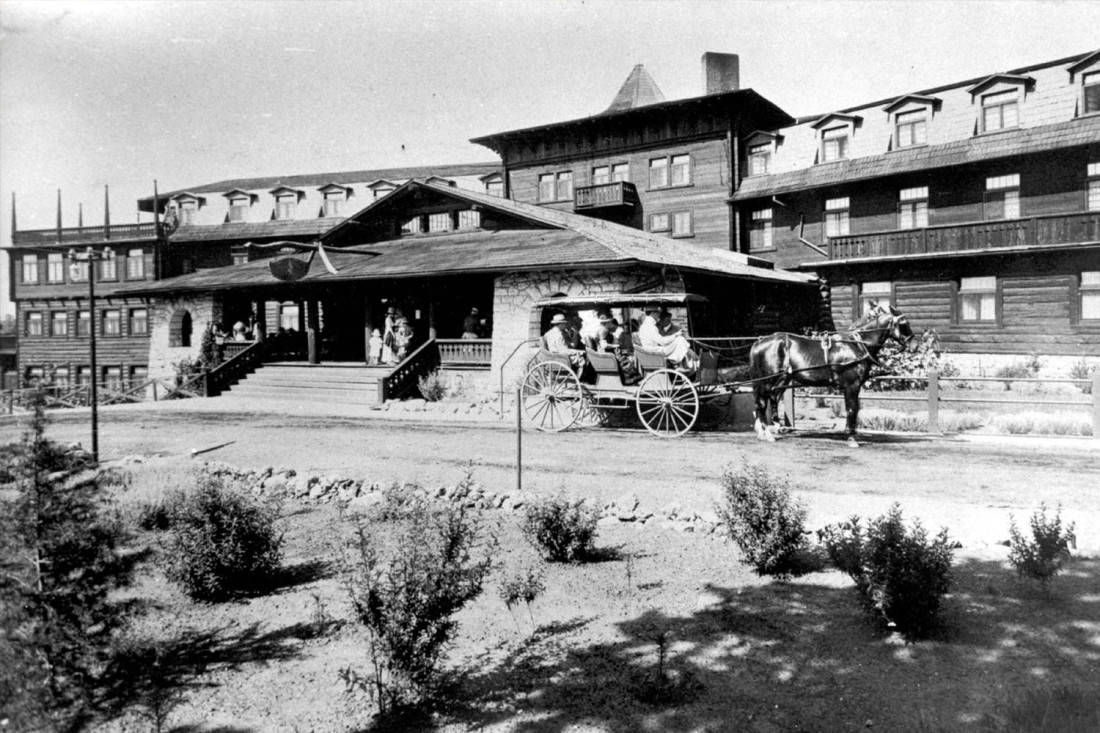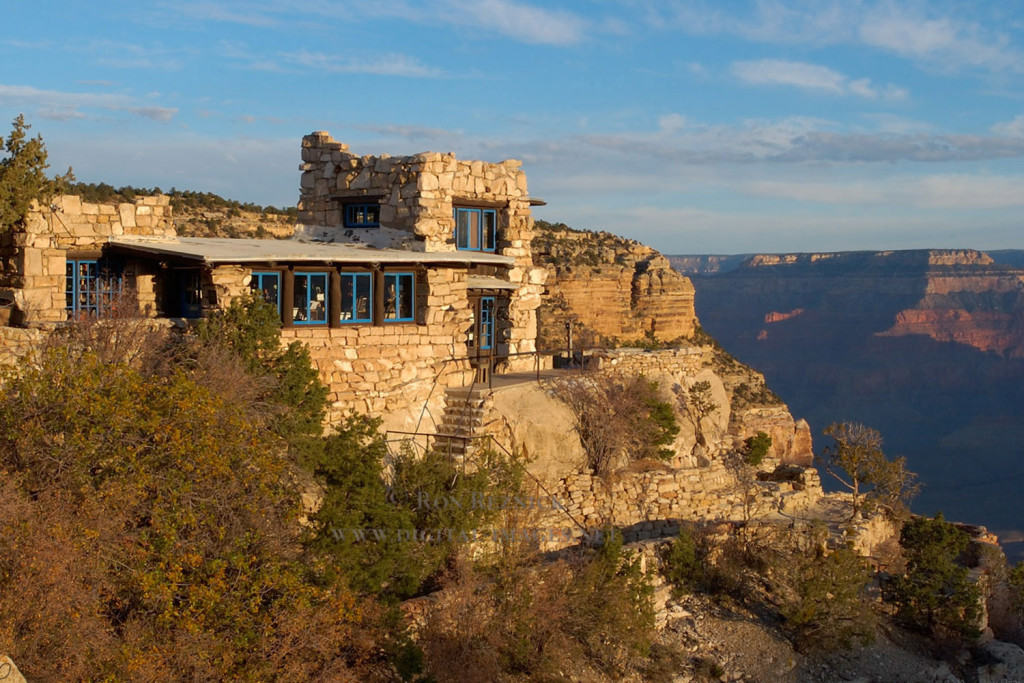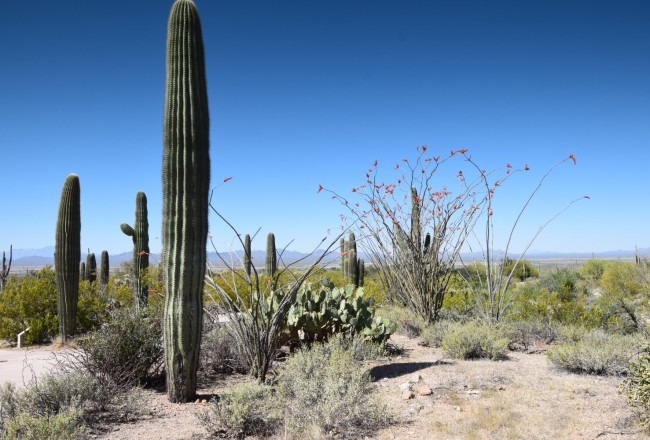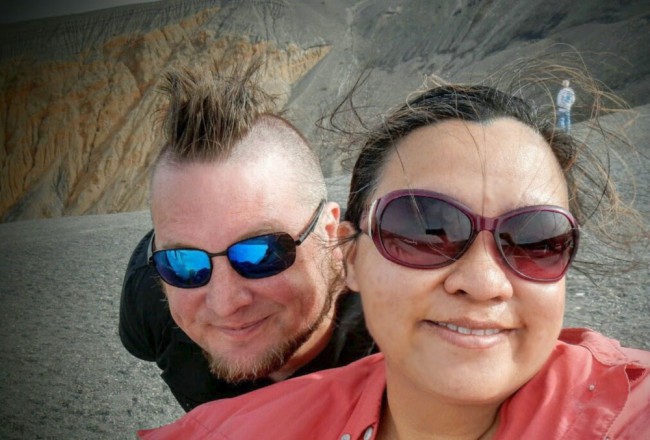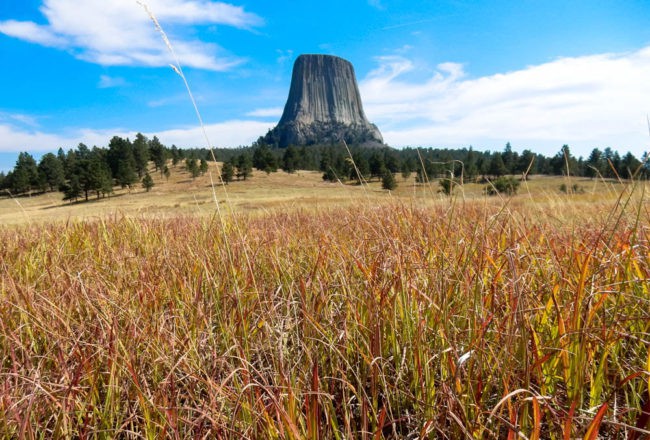If you’re into history, the Grand Canyon Village within the Grand Canyon National Park is an excellent place to explore and most of the buildings are located right off the Rim Trail. Also known as the Historic District, this quaint location can trace its beginnings to mid-1800s, when stagecoaches full of people. But be forewarned, starting March and through October, much of the village is overrun with tourists. I decided to set aside my aversion to crowds in exchange for a day of Grand Canyon History.
Kolb Studio
Our first stop was Kolb Studio, right next to the Bright Angel Trail. Built-in 1904 by brothers Ellsworth and Emery Kolb, the house served as a home, photography studio, and theater for shows and films. From the outside, it appears to be an old house perched on the Grand Canyon rim. When we visited, the main floor consisted of a gift shop and a really wonderful view of the canyon from what looks like to be an old breakfast nook. Downstairs in the old theater is the studio’s latest exhibit, “The Amazing Kolb Brothers,” featuring antique cameras, photographs, a short documentary, and other artifacts of that time period. The upstairs rooms were off-limits.
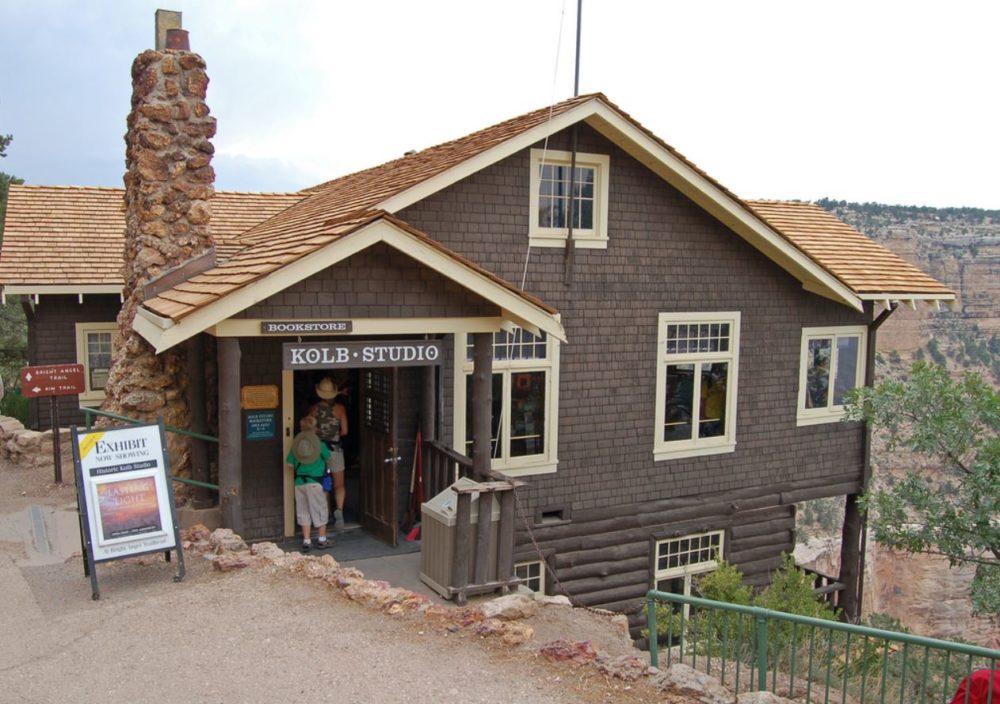
Kolb Studio – its all about location, location, and location!
Lookout Studio
Just a few steps along the Rim Trail is another of Mary Colter’s designs, Lookout Studio. This stone building currently houses a gift shop, a viewing platform, and an observation tower. Constructed of the local Kaibab Limestone, the Santa Fe Railway built The Lookout as a photography studio to compete with Kolb Studio. We briefly passed by this place while on the Rim Trail but didn’t go in since it closing time for the building. I later read that early 20th-century visitors would view the inner canyon and trails with large telescopes set up along the porches of the building. There are telescopes, but only the kind that requires quarters. A fun little building that seemingly blends into the canyon wall.
Bright Angel Lodge
Just beyond Lookout Studio on the Rim Trail is Bright Angel Lodge, also designed by Mary Colter. The main building serves as a central location for all the cabins that tourists can rent. From outside, we saw that the main lodge had a simple shallow-pitched gable roof. The roof overhangs at the main entry to form a covered porch supported by peeled-log posts. We didn’t have time to stop in the Lodge, but we enjoyed its Victorian country look and the eclectic collection of cabins surrounding her.
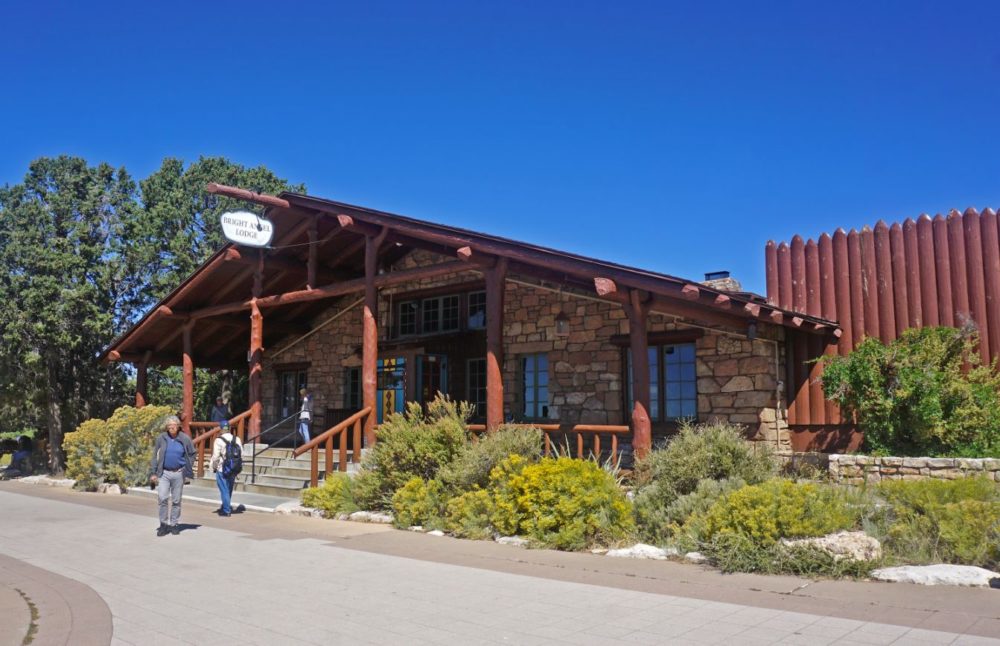
Bright Angel Lodge
El Tovar Hotel
From the outside and front, the 1905 El Tovar hotel looks to be built from logs and limestone on the main floor. Behind is a large porch overlooking the Rim Trail and the canyon. Back then the hotel also had a greenhouse to grow fresh fruits and vegetables. A chicken house supplied fresh eggs and a dairy herd provided fresh milk for the kitchen. Inside there use to be a barbershop, solarium, roof-top garden, billiard room, and art and music rooms. Today the Victorian age luxuries are gone replaced by gift shops and more guest rooms. Inside, the public area is rustic and decorated with hunting trophies, but everything – down to the light fixtures – looks obviously aged and tired; and in need of a good dusting and spring cleaning.
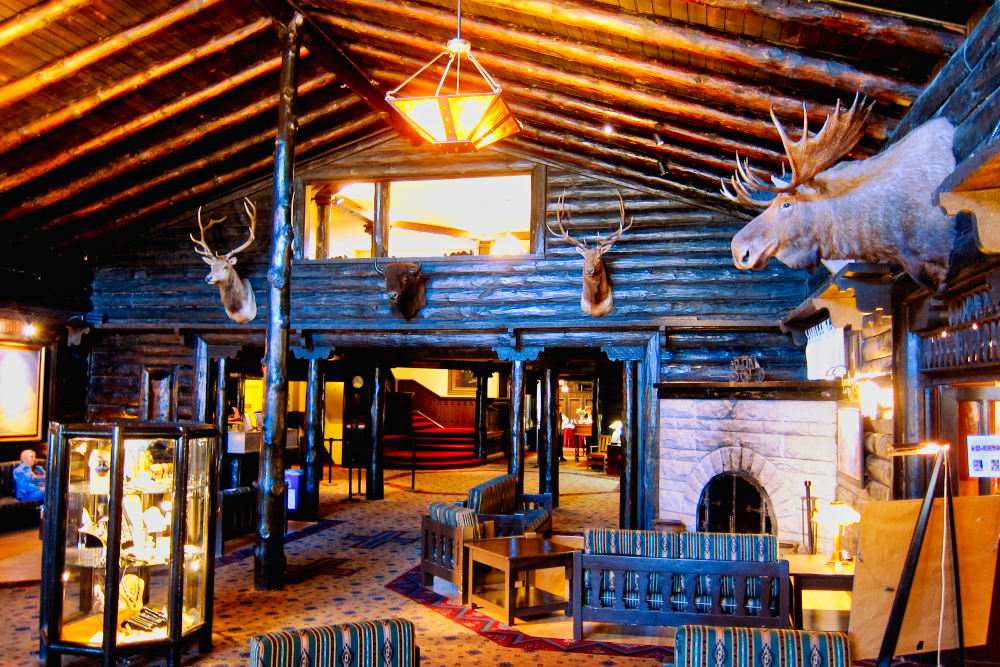
Victorian Woodsy Cabin Look of El Tovar
Hopi House
Just next door is Hopi House, another of Mary Colter’s designs. I loved Hopi House with her stepped structure executed in sandstone. I didn’t even mind that the windows were sparse and small, it just made the view of the canyon that more precious. Doors are also small and Hitch (Sig) had to duck to enter the House and the rooms within. When the house was first built, the Interior walls were plastered with adobe and ceilings are composed of saplings, twigs, and grass covered with mud. Today the interior is modernly refurbished and houses a gift shop selling local native American art. The second-floor use to be a kiva (a kind of room used for religious rituals), but today sells museum-quality art for sale.
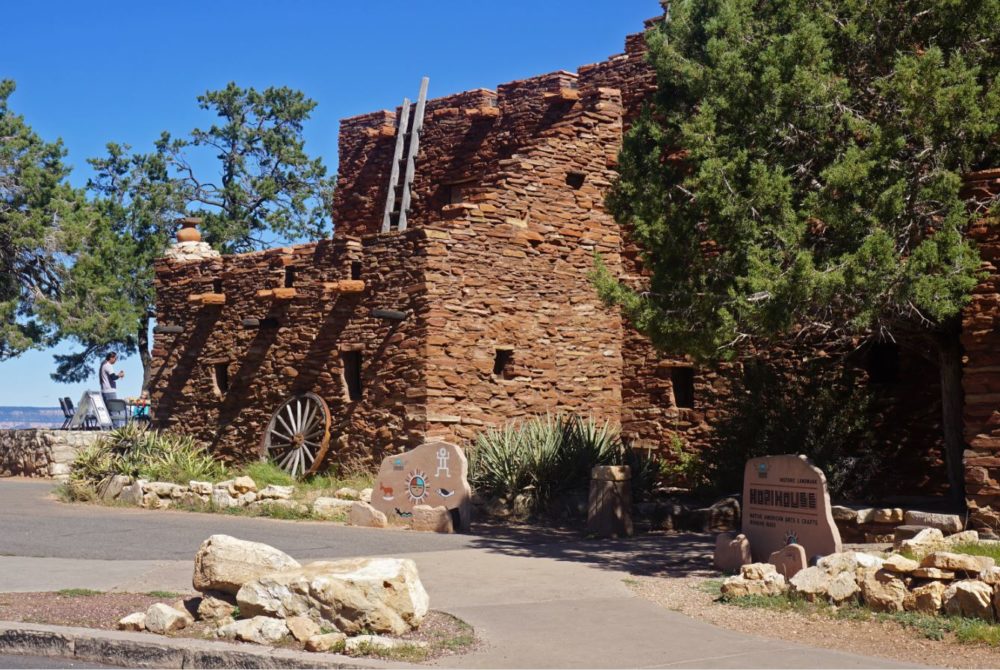
Hopi House holds a wealth of Native American Art
Verkamp’s Visitor Center
Once called Verkamp’s Curio Store, this building is the two-story shingled building designed in the “Modified Mission” style; meaning that it resembles an adobe building in shape but not material since it is made of mostly wood. Ohioan John George Verkamp built this inquisitive house in 1906 both as home and storefront to sell Native American arts and textiles. Back in the day, the Verkamp store was considered an eyesore because it did not fit in with the environment as the other buildings did. This year, she celebrated her 110th anniversary and the building still stands tall, run by the National Park Services serving as a museum and gift shop.
Other locations we didn’t get to visit in the Grand Canyon Village were the Santa Fe Railway Station, Buckey O’Neill’s Cabin, Red Horse Cabin, and the Grand Canyon Cemetery.
We could have easily spent another day learning and wandering about in the Grand Canyon Village, but the history held within the buildings is just a mere fraction compared to the epoch of wisdom housed with the rocks of the Grand Canyon herself and the star of this show.
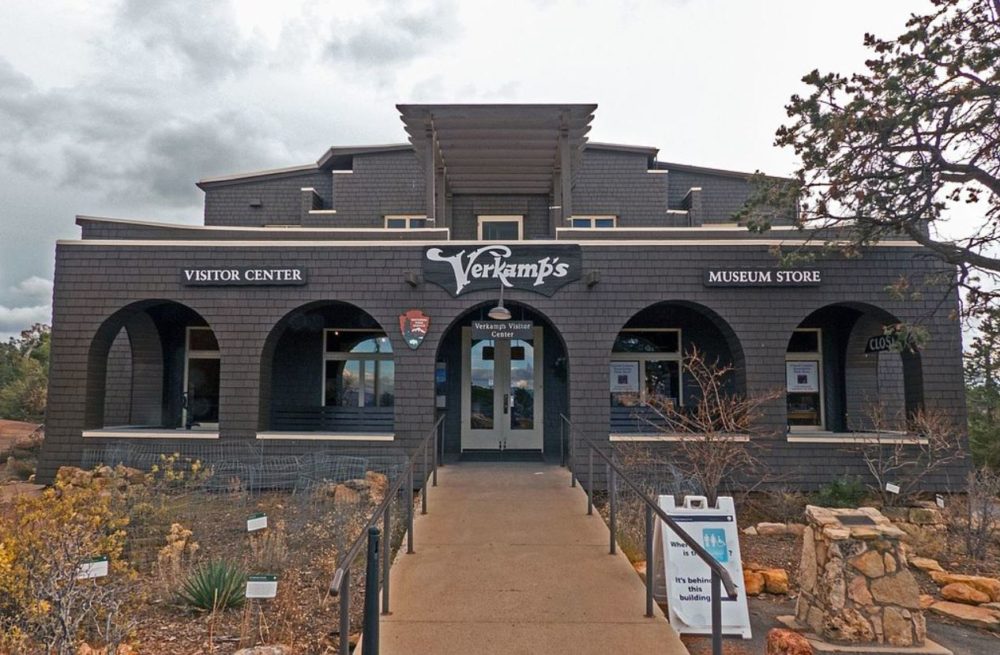
I would have liked the Verkamp’s Curio Shop better
